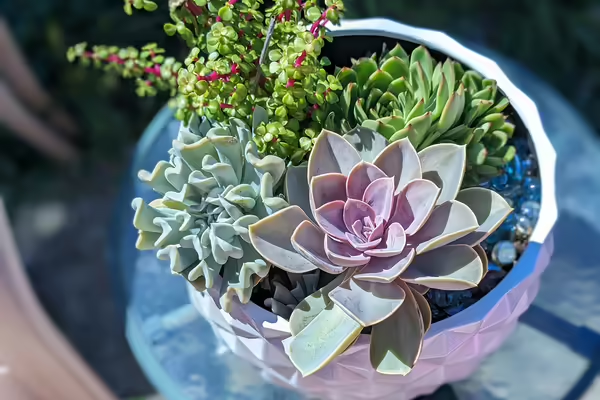
URBANA, Ill. — Liven up your home this winter by introducing carefree and cheery succulents. Succulents offer interesting shapes and colors with their unique fleshy, plump leaves. The best part is they are relatively simple to care for if you can provide ample light.
A few easy-care succulents that do well indoors include jade, haworthia, aloe vera, kalanchoe, sedum, echeveria, and euphorbia. Research each variety to determine their light and watering requirements. Succulents are often grouped together in small dish gardens, which work well because they dry out quickly. However, the combinations should have similar light and watering needs for each plant to thrive.
The biggest mistake people make with succulents is overwatering them. These are plants that thrive on neglect.
Watering needs vary depending on the time of year, air circulation, humidity, room temperature, and available light. Generally, succulents need water every two to three weeks. Think of it as a wet and dry period. Only water succulents when the soil is completely dry and water deeply until water runs out of the drainage holes of the pot. Succulents go dormant in the winter and can be watered even less, perhaps only a couple of times.
The biggest challenge with growing succulents indoors is the lack of sunlight. It is best to provide at least six to eight hours of bright sunlight. This can be difficult in the average home. Rotate succulents between sunny windows or provide supplemental lighting using fluorescent or LED bulbs. Plants will grow toward the light source, so rotate pots frequently to keep plants uniform.
Succulents can be moved outdoors during the summer months. Slowly transition plants because unfiltered sunlight is much more intense, causing the leaves to burn. Put them somewhere with indirect sunlight and gradually move them to sunnier locations.
Succulents do use a special soil mix. Succulent potting soil can be purchased at garden centers. Or you can mix your own using one-part organic matter, such as potting soil or coir, and two-parts mineral, such as coarse sand, perlite, or pumice. Use pots with drainage holes. Clay and terracotta pots work well because they are porous, and the soil dries quicker.
Most succulents do not need regular fertilization. Once a year in later spring or summer is sufficient, and apply a quarter to half the rate suggested on the fertilizer instructions.
Pests are typically not a problem, but scale and mealy bug infestations can happen. Control minor infestations by swabbing or spraying insects with rubbing alcohol. Neem oil and insecticidal soap are also an option. Keep infected plants away from healthy plants. Dry lower leaves on succulents are normal, and these can be removed.
Many succulents are easy to reproduce through propagation by offsets, stem cuttings, or leaf cuttings. Over time, the mother plant will develop offsets or young plants. Leaves may fall into the soil and generate new growth.
When using stem or leaf cuttings, allow the bottom of the cutting to dry out and callus for about a week before replanting them. Then, lay or gently plant cuttings in moist soil and allow them to root for at least a month. Once roots are developed, the cuttings can be transplanted into small pots.
For more information about plant care, connect with your local Illinois Extension county office at go.illinois.edu/ExtensionOffice.
Nancy Kreith is an Illinois Extension horticulture educator for Cook County. Gardeners Corner is a quarterly newsletter from gardening experts around the state. Each issue highlights best practices that will make your houseplants, landscape, or garden shine in any season. Join the Gardener’s Corner email list at go.illinois.edu/GCsubscribe for direct access to timely tips.
PHOTO CAPTION: Photo by Nancy Kreith, Illinois Extension. When mixing different types of succulents in the same container, research each plant’s water needs to ensure they all can thrive. The photo in this article is available to download for media use.
Illinois Extension leads public outreach for University of Illinois by translating research into action plans that allow Illinois families, businesses, and community leaders to solve problems, make informed decisions, and adapt to changes and opportunities. Illinois Extension is part of the University of Illinois Urbana-Champaign College of Agricultural, Consumer and Environmental Sciences.